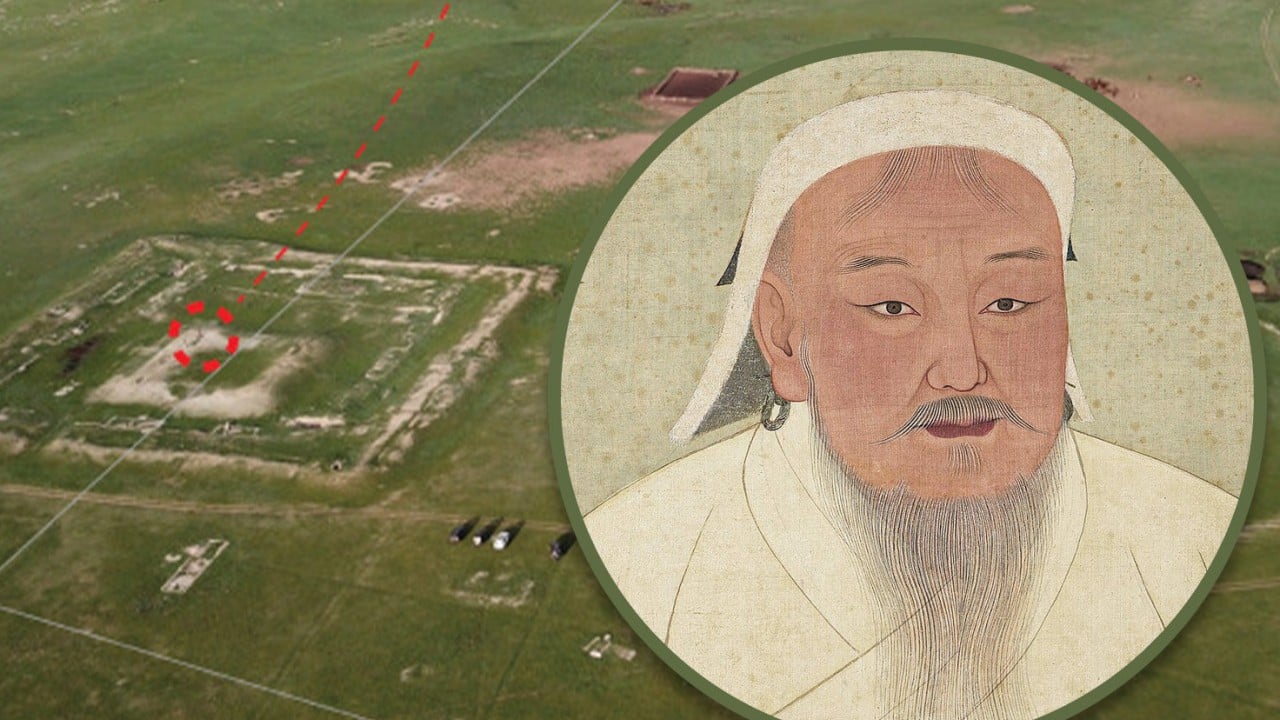The Mongolian Empire is distinctive in popular imagination for its swift ascent, vast territorial expansion, and the fear instilled by its leader, Genghis Khan.
Ironically, Khan’s larger-than-life presence means we know very little about his birthplace — near the modern border between Mongolia and Siberia — in the years leading up to his birth.
“When Genghis Khan rose to power, the region was transformed from a remote area with no central authority to the heartland of a world empire,” said Gideon Shelach-Lavi, the Louis Frieberg professor of East Asian Studies at the Hebrew University of Jerusalem, and the co-author of a new study analysing an intriguing 12th-century grave found in the region.
His team hopes that the recent excavation of the grave, belonging to an “elite woman”, can help paint a picture of what life was like for the people who lived through a time of chaos and transition before they became the centre of global power.
We know Khan’s homeland was a frontier zone of the Liao dynasty, or Kitan Empire, between 916 and 1125. It was abandoned by central authorities after Wanyan Aguda led an uprising to overthrow the Liao and establish the Jin dynasty (1115-1234).
Histories suggest the area became a contested region between various political entities named “Kereit”, “Merkit”, “Tatar”, “Naiman”, and “Mongol”.
These people did not build any monuments or leave much archaeological evidence, so little is known about the cultural and political processes in the 12th century that would pave the way for the rise of the Mongolian empire, which first emerged in 1206.
The grave was housed inside a fort named Khar Nuur and belonged to an older woman who appeared to have lost all of her teeth before she died. Her mild osteoarthritic joints suggest she lived an active lifestyle.

“The Khar Nuur burial is located in an eastern region that was inhabited by groups participating in the 12th century Mongol emergence and, before that, part of the Kitan and Jurchen Jin frontier zone,” wrote the study authors.
Shelach-Lavi told the Post that the grave was likely dug after the fall of the Liao, either during the period of the Jin, when the area was inhabited by pastoral-nomadic people or the years when the Mongol state was first established.
His team believes the fort was abandoned at the time of her burial but had not been deserted for long and “was certainly living in the local memory.”
“She herself may have been living when [the fort] was still active,” said Shelach-Lavi.
The region was likely embroiled in political struggles between Mongols, remaining Liao loyalists, and Jin citizens trying to stabilise their northern frontier.
The burial fits well with examples of Mongol burials but also differs notably, specifically in that it lacks “a stone-built surface feature”, and there is a notable absence of pottery. The body was also buried more shallowly than in traditional Mongol graves.
Additionally, the grave contained a vast range of artefacts that likely came from great distances, leading the team to hypothesise that the older woman was a member of a prestigious family that would have received tributes.

“It points out to an extensive network of exchange that we did not know about, and that may be important for our understanding of the background for the rise of Genghis Khan and the Mongol empire,” said Shelach-Lavi, adding that a bronze vessel decorated with bird and geometric motifs was particularly intriguing for its uniqueness.
The decision to bury the woman in the frontier fortress also intrigued the archaeologists. While they cannot attribute definitive motivations to the choice, the scientists did offer a few hypotheses.
One idea was that the ceremony was “perceived as affirming local identity and recent social memory”. Shelach-Lavi raised the possibility that the tribe may have had an intimate relationship with the building.
The researchers also suggested that the fort had particular prestige and that burying her there marked her importance within the community.
Finally, they offered the idea that the burial was meant to establish possession over the territory.

“Perhaps one way to [establish primacy] included opulent and public funerary events in conspicuous locales intended to draw the attention of nearby groups,” the authors wrote, adding that the three ideas were not mutually exclusive.
The burial suggests that when the Liao and Jin imperial governments receded from the area, it led to “combinations of social memory and identity assertation” along with displays of power and prestige.
These displays of cultural rights and territorial possession would have gone hand-in-hand with warfare, creating a period of chaos that eventually ended with Mongol supremacy.
Shelach-Lavi said of the rise of Khan: “It created many opportunities to become part of a new elite. It also elevated the status of warriors and brought a lot of wealth to this area. But on the other hand, you may also say that many of the people that inhabited this region continued their way of life as mobile pastoralists.”


